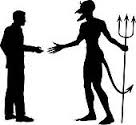The US dollar is rebounding today after yesterday’s correction. Those losses seemed to have been a function of some profit-taking after the seeming confirmation in the FOMC minutes that the Fed was set, barring a significant surprise, to raise rates next month. The dollar bulls were already beginning to buy the dip before Draghi spoke.

Draghi escalated his rhetoric regarding future ECB action. The market took Draghi’s comments as a signal that the ECB will take aggressive action when it meets on December 3. The euro was sold back to yesterday’s lows (~$1.0660) before a bid was found.
Draghi said the ECB will “do what it must” to lift inflation as quick as possible. He pushed back against ideas that the with the core rate at a two-year high (1.1%), there was no need for such urgency. The central banks in Germany, Slovenia, and Estonia have argued against the need for new action. Draghi is still pushing forward. It is predicated on the staff cutting its growth and inflation forecasts.
In his tenure, Draghi has more often than not surprised the market with his dovishness. His comments today are important. Taken together they suggest that Draghi is pushing the ECB toward broad based action. There are four moving parts: pace, duration, composition and rates. What participants are contemplating now is not tweaking one or two of these, but all of them. Stepping up the pace of the purchases from the current 60 bln euros, to be extended beyond September 2016, including more agencies, and possible sub-sovereign instruments, and a cut in the deposit rate.
Draghi’s comment today that a lower deposit rate strengthens the transmission of the asset purchases, is the strongest signal to date that this is on the table. Many people were looking for a 10 bp cut in the deposit rate, some 20 bp. However, with the German 2-year yield at record lows near -40 bp, to really get ahead of the curve, a larger cut would be needed. There is some speculation that the ECB may be considering a 50 bp cut. In this environment, it is difficult to envision a sustained euro bounce between now and early December,













Leave A Comment